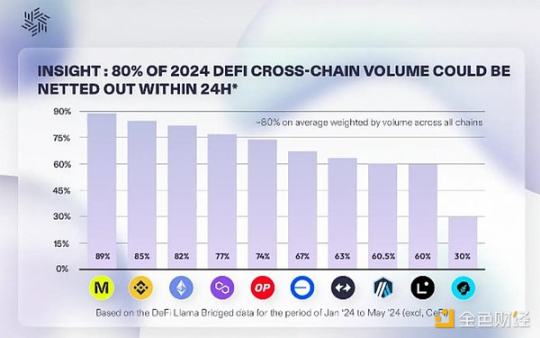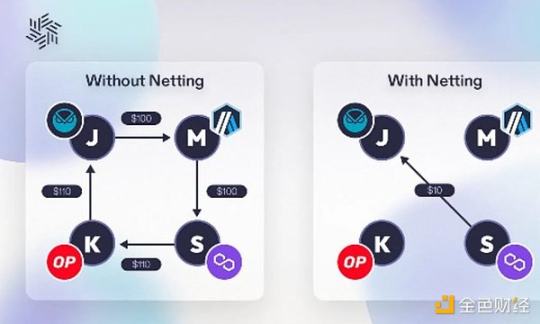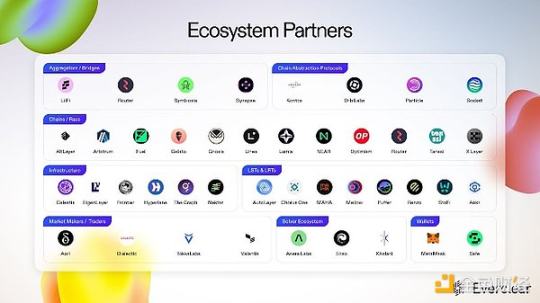Author: Paul Veradittakit, Partner at Pantera Capital
Translation: Jinse Caijing xiaozou
1. Clearing Intents
Currently, there are dozens of active L1 chains, and with the emergence of rollup services, the number of L2 chains has also exploded. Reducing the trade-offs for cross-chain cryptocurrency transfers, unlocking value for all chains, improving user experience, and creating narrower spreads for users are essential for the growth of users, applications, and protocols on these chains. Bridges are the means by which users can transfer assets and liquidity across chains. This is crucial for price stability on chains, and more importantly, for providing consumers with competitive spreads. Current crypto bridges face the trilemma of being fast, low-cost, and permissionless.
There are three types of cross-chain bridges:
- Custodial bridges: Using centralized exchanges (CEX) such as Coinbase or Binance for cross-chain bridging offers immediacy and lower costs, but lacks permissionless features.
- Permissionless bridges: Speeds of protocols like Hyperlane, Portal, Hop, and LayerZero are relatively fast but not cheap. They can be permissionless, charging fees to liquidity providers (LP), or rely on trusted miners to create standardized packaged assets (not trusted assets).
- Intent bridges: Current solutions are permissionless, but due to rebalancing, they are typically slower and not significantly cheaper than permissioned bridges, and are limited to large batches of tokens.
Intent bridges are expected to address this trilemma, but face challenges such as liquidity fragmentation, lack of standardization, and rebalancing costs.
Everclear's Clearing layer aims to address all these issues, significantly reduce friction in cross-chain transfers, lower costs for application builders and users, and simplify the user experience for developers and users.
2. Intent Results
The Intent bridge has observed that 80% of cross-chain transaction volume will "flow back into the network" within 24 hours, meaning that for every dollar leaving a chain, 80 cents will return to the chain within 24 hours. There are always transactions coming in and out, but 80% of the transaction volume ultimately returns to the original location.

The Intent protocol profits by exchanging liquidity on different chains rather than bridging. For example, if a protocol like UniswapX has a user transferring $100 from Arbitrum to Polygon, and another user transferring $100 from Polygon to Arbitrum, UniswapX facilitates the local transfer of tokens between the two users, which is much cheaper than traditional bridging methods.

The core problem that Everclear solves is that such perfect matches are rare. Without such perfect matches, the protocol must slowly transfer balances through traditional custodial or permissionless bridges and perform "rebalancing." This is a slow, complex, and expensive process.
3. Benefits to All Parties
The main stakeholders benefiting from the Intent bridge are:
- Permissionless blockchains, which hope to integrate bridging solutions, which is usually a lengthy process.
- Protocols (auctions) with intent order flows, but limited to their own order flows.
- Solvers (liquidity providers) executing certain intents on chains, but without an effective rebalancing method.

Everclear standardizes this process for everyone, acting as a panacea. On each chain, Everclear deploys standardized contracts, allowing users to generate "invoices" for their intents, and solvers to "balance" with each other. If no one claims the invoice after a period of time, it begins a Dutch auction. For example, if a user intends to transfer 10 ETH from Arbitrum to Polygon and initially no solver executes the request, the intent will be discounted to 9.99 ETH, and then progressively lower until a solver claims the invoice.
This standard benefits all stakeholders and creates a permissionless system that can aggregate order flows for applications, providing more order flows for solvers to maximize profits, and can support any chain with this standard set of smart contracts.

4. Partnerships
Everclear's goal is to benefit everyone. Existing stakeholders have a standardized system that effectively ensures intents are eventually executed, intensifying competition for user order flows, thereby lowering prices. This also means that the more stakeholders there are, the more efficient this market becomes.
In light of this, Everclear has collaborated with numerous stakeholders, such as aori (rebalancer), StaFi Protocol (L2 liquidity staking and pledging app), Tokka Labs (rebalancer), Renzo (liquidity re-pledging), Anera (rebalancer), and more.
5. Mainnet Launch
Everclear is the first clearing layer to coordinate global settlement of cross-chain order flows, addressing the liquidity fragmentation issue of modular blockchains. Everclear's mainnet went live on September 18th. For more details and to participate, please refer to their blog.
免责声明:本文章仅代表作者个人观点,不代表本平台的立场和观点。本文章仅供信息分享,不构成对任何人的任何投资建议。用户与作者之间的任何争议,与本平台无关。如网页中刊载的文章或图片涉及侵权,请提供相关的权利证明和身份证明发送邮件到support@aicoin.com,本平台相关工作人员将会进行核查。




